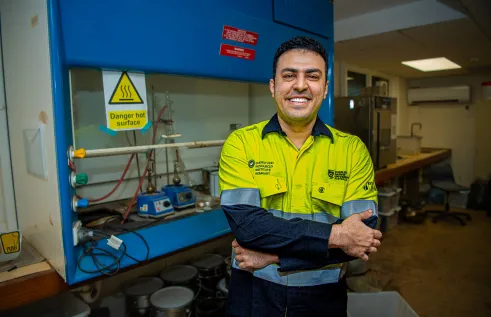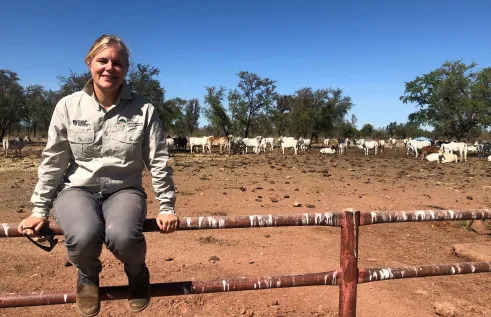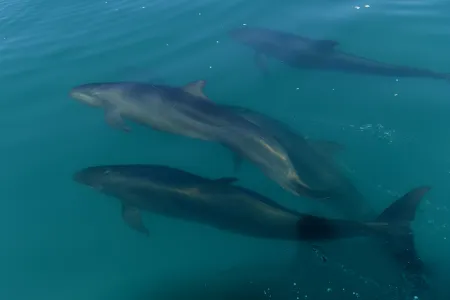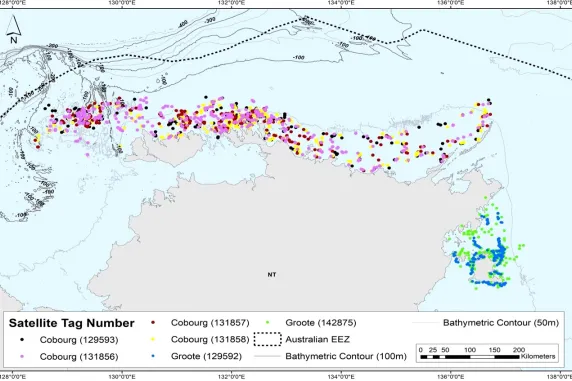News
Study shows links between Australia’s false killer whales and endangered groups from Hawaii
False killer whales off the Northern Australia coast need their conservation status reviewed because of similarities they share with groups from Hawaii listed as Endangered in the USA, a Charles Darwin University (CDU) researcher says.
The latest research, published in Frontiers in Marine Science, investigated satellite tag information and DNA samples of the marine mammals from shallow coastal waters from the Cobourg Peninsula in the Northern Territory to the Kimberley region of Western Australia.
In 2012 one of the samples within Port Essington of the Cobourg Marine Park in northern Australia was found to share genetic ancestry with false killer whales found off the coast of Hawaii, and there are other similarities between the groups too.
In Hawaii there are two separate groups of coastal false killer whales - a distinctive species of dolphin - and neither mix with their offshore cousins who live in deep water and this looks like being the case in northern Australia.
Under American legislation however, their false killer whales are labelled as Endangered, whereas in Australia the local populations are listed as Cetaceans, with no Australian Conservation Status.
“We would like to take a precautionary approach and update the conservation status of false killer whales as vulnerable,” said lead researcher, marine biologist Dr Carol Palmer.
“The Australian false killer whales could be genetically unique and also endangered. We need more data to know for sure,” Dr Palmer said.
In Hawaii there are two populations of the coastal false killer whales, one of around 250 individuals and another of about 500.
It is unknown how many are in the Australian populations.
“I think in Australia the populations are naturally small, but we need the funding to get an accurate population estimate,” Dr Palmer said.
The Australian false killer whales seem to travel along the coast, with one tagged individual travelling 7500 kilometres over 105 days, about the same speed as an Olympic long-distance swimmer, she said.
“The tracking and genetic results did show that the false killer whales covered a huge range across Northern Australia.”
First Nations rangers from across the Top End (and the Kimberley), including rangers who were part of the Marine Megafauna workshop and false killer whale research, met at the CDU’s Waterfront campus in mid-February to discuss the findings of this latest study and ongoing marine megafauna work to be carried out in the unique sea country of the NT.
Read the research here.
Related Articles

Where rubber meets the road: Old tyres are key to building tougher roads
Almost half of the Northern Territory’s worn-out tyres end up in landfills – with the rest exported interstate for recycling – but a study led by Charles Darwin University (CDU) is repurposing the discarded rubber to build stronger, sustainable roads that meet the NT’s unique needs.
Read more about Where rubber meets the road: Old tyres are key to building tougher roads
Social media subjecting Black women to radicalised digital policing
Influencers use oppression, manipulation and weaponisation to police Black women on social media, according to new research uncovering the entrenched nature of digital racism.
Read more about Social media subjecting Black women to radicalised digital policing
Moo-ving the boundaries: New research evaluates virtual fences for use on NT cattle stations
Cattle producers in Northern Australia face unique challenges when adapting tools like virtual fences on their properties, but new research from Charles Darwin University (CDU) is set to break down the barriers to this technology.
Read more about Moo-ving the boundaries: New research evaluates virtual fences for use on NT cattle stations

